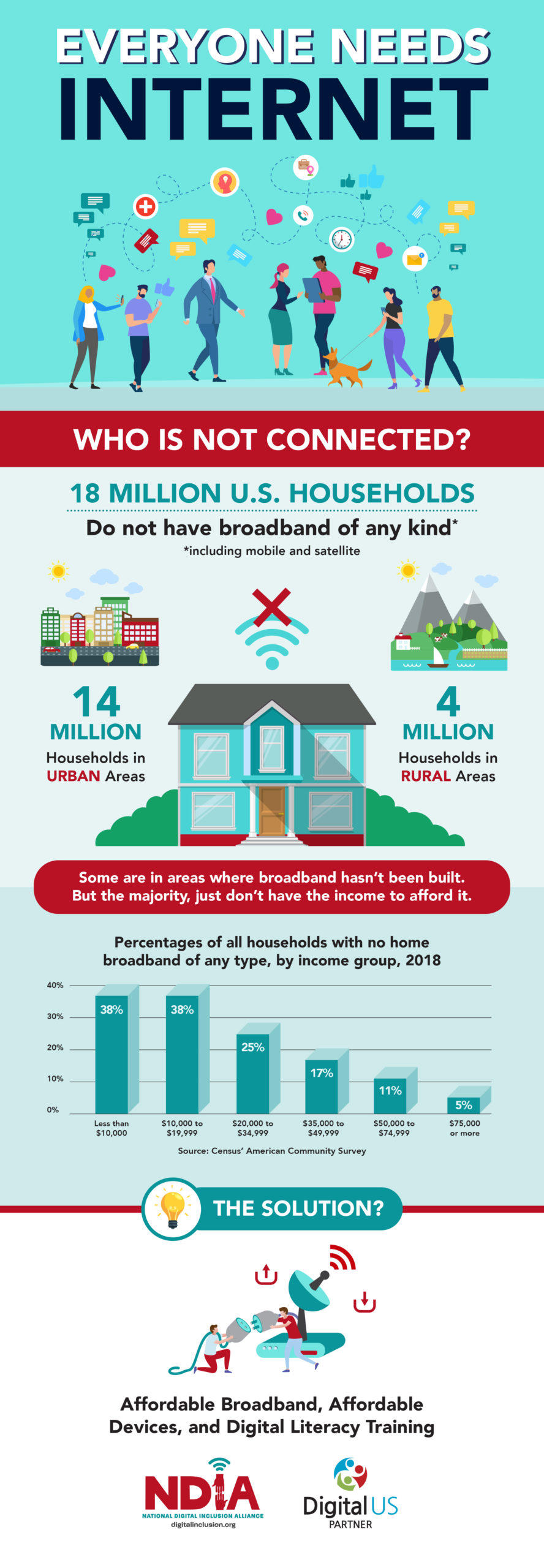What is the digital divide?
digital divide
the economic, educational, and social inequalities between those who have computers and online access and those who do not. (Merriam-Webster)
Closing the digital divide is not just about ensuring broadband availability, it's about reducing all barriers to internet access, including affordability, device access, and digital literacy. As shown in the NDIA Infographic below, 18 million U.S. households do not have broadband of any kind.
How does the digital divide relate to digital equity?
Closing the digital divide will bring us closer to achieving digital equity.
Affordable Broadband
According to BroadbandNow only 3% of Coloradoans have access to a standalone internet plan under $60 per month.
Find out if you qualify for discounts or free internet.
- Many ISPs have a discount program for students, income-qualifying households, or other groups.
- The Federal Communications Commission (FCC) Emergency Broadband Benefit Program provides a temporary discount on monthly broadband bills for qualifying low-income households. Visit getemergencybroadband.org for more information.
- Many schools, libraries, and healthcare providers may offer broadband assistance or free broadband access.
Device Access
Owning a working computer and possessing the skills to use it productively is a basic need in today’s society. According to Digitunity, 7.15% of households in Colorado have no computer, and only 73.45% of household have more than one device. A Pew Research Center survey shows that Americans with lower incomes have lower levels of technology adoption.
Digital Literacy
Digital Literacy is the ability to use information and communication technologies to find, evaluate, create, and communicate information, requiring both cognitive and technical skills.
According to the National Digital Inclusion Alliance, a digitally literate person:
- Possesses the variety of skills – technical and cognitive – required to find, understand, evaluate, create, and communicate digital information in a wide variety of formats;
- Is able to use diverse technologies appropriately and effectively to retrieve information, interpret results, and judge the quality of that information;
- Understands the relationship between technology, life-long learning, personal privacy, and stewardship of information;
- Uses these skills and the appropriate technology to communicate and collaborate with peers, colleagues, family, and on occasion, the general public; and
- Uses these skills to actively participate in civic society and contribute to a vibrant, informed, and engaged community.

